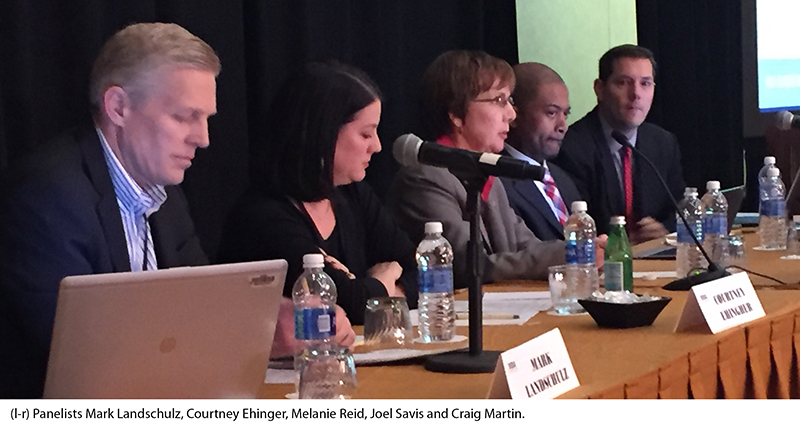
Using Customer Feedback to Improve Servicing Experience
DALLAS– Listening to customers can improve the bottom line of your servicing operations. But how you listen to customers is more important.
Sounds simple, right? But panelists here at the Mortgage Bankers Association’s National Mortgage Servicing Conference & Expo said many mortgage servicers are inefficient in customer self-service and other ways to manage customer relationships.
 “We want to focus on how to run our businesses better,” said Craig Martin, mortgage practice lead with J.D. Power and Associates, Westlake Village, Calif. “Everyone looks at customer data. It’s important that you look at that data in the right way so that you can drive your customer experience–and drive down costs.”
“We want to focus on how to run our businesses better,” said Craig Martin, mortgage practice lead with J.D. Power and Associates, Westlake Village, Calif. “Everyone looks at customer data. It’s important that you look at that data in the right way so that you can drive your customer experience–and drive down costs.”
“While the customer experience is an important thing, it’s not the most important thing,” Martin added. “I can say that–I work for J.D. Power. The most important thing is how to deliver service more efficiently, which in turn will drive customer satisfaction.”
Joel Davis, senior vice president of customer care with Freedom Mortgage Corp., Mt. Laurel, N.J., said most organizations use post-transaction surveys; his company takes a deeper dive into complaint data on a monthly basis.
“It’s your view on how customers perceive you,” Davis said. “Our post-transaction survey examines these experiences so that we can understand what our complaints are triggering and how we can fine-tune our processes.”
Melanie Reid, CMB, AMP, head of mortgage servicing with Citizens Bank, Providence, R.I., said her company also relies heavily on complaint data. “We actually try to focus on what the customer experience was-what triggered the call and how our customer service rep handled the call,” she said. “We try to empower our customer service reps as much as possible so that they can resolve the issue with as few calls as possible.”
Reid noted that for every complaint call received, “there are probably five people who don’t call to complain. So resolving the complaints that do come in is vital in deterring other complaints.”
Courtney Ehinger, senior vice president of performing services with Nationstar Mortgage, Coppell, Texas, said her company does use post-transaction surveys. “We’ve designed the scorecard to trigger a call-back for customer complaints,” she said. “We don’t put quotas on our customer service reps. We tell them to take as much time to resolve the complaint as is needed.”
Mark Landshulz, executive vice president and director of servicing with Flagstar Bank FSB, Troy, Mich., said his company employs a “hold the line” feature to provide immediate measurement of the borrower transaction. “Satisfaction surveys don’t necessarily illustrate what the real problem might be,” he said. “Our customer complaint database provides us with a ‘to-do’ list for us to resolve issues.”
The biggest complaints, panelists said, involve payments and escrow. “The borrower is calling to make a payment because they’re having trouble with the payment process,” Ehinger said. “We try not to look at the problem from a ‘what did we do wrong’ process but instead to a ‘what can we do to better educate the customer’ process. By helping the customer help themselves, we enhance our own processes.”
So, how do servicers take processes one step further?
“You can look at your call information and decided that your escrow processes are flawed and fix it,” Landshulz said. “Given where the entire mortgage servicing has been over the past few years, in today’s compliance environment, we focus on compliance. So our customized statements include information about compliance with laws and regulations.”
Having said, that, Landschulz added, “We’re the servicing experts; the customer is not. We try to educate our customers as much as possible.
“I think all of us had this epiphany at the same time that our escrow analysis needed to improve,” Davis said. “We’re reaching out to part of our customer base so that they can provide feedback on our escrow processes–is it easy to understand? Is it confusing? The voice of the customer is helping us create a new escrow template.”
Freedom Mortgage recently revamped its website to make it more customer-friendly. “Our goal is to minimize or redirect calls with better information,” Davis said. “The goal isn’t necessarily to reduce our costs–we are in fact expand our customer service staff–but we hope the site improves efficiencies.”
“We all know how much it costs for a call to go through to an agent,” Ehinger said. “A happy customer and a happy employee means better returns.”
Reid said reaching out to minority borrowers remains a priority. “Most companies have bi-lingual customer service representatives, but there are potential roadblocks in doing much more than that,” she said. “There are legal ramifications in providing documentation in other languages, because that raises legal and regulatory questions as to what servicers are required to provide to customers.”
